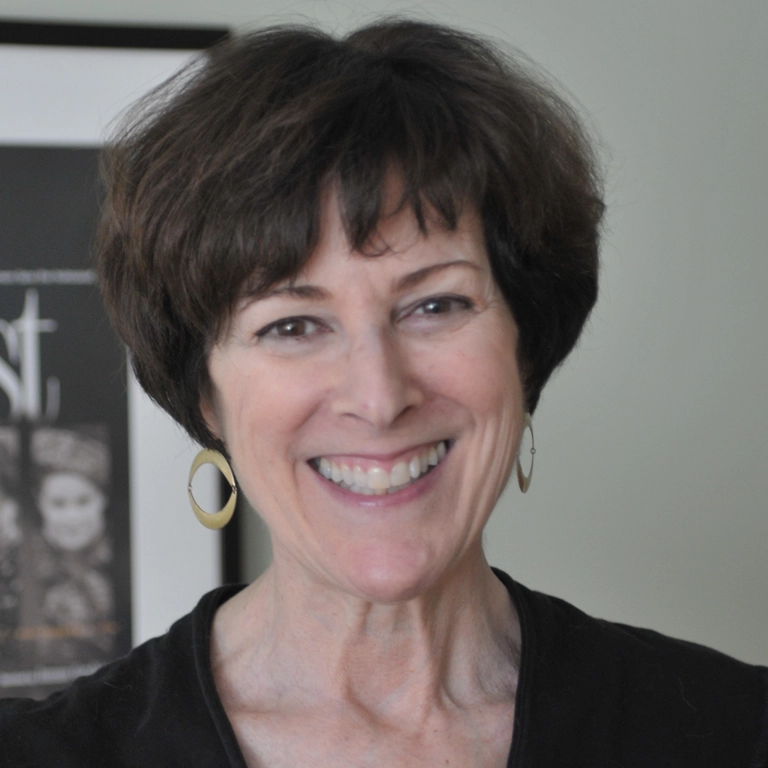How to manage sleep difficulties related to breast cancer
Explore various strategies, including mindfulness, soothing distraction, and other techniques to help you cope with the challenges of sleeplessness during and after breast cancer treatment.
- 02/26/24
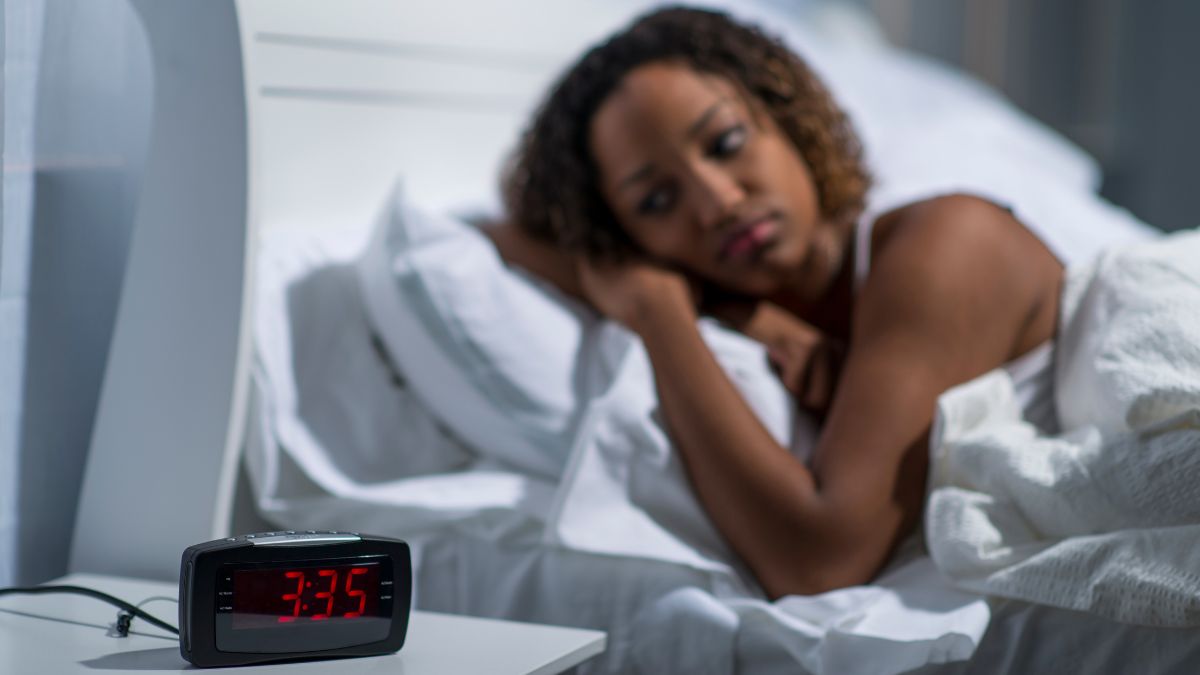
Even Lisa Strauss, Ph.D., a licensed clinical psychologist and behavioral sleep specialist, faced sleep difficulties during tamoxifen treatment for early-stage breast cancer 13 years ago.
If an expert like Dr. Strauss struggled, how can the average person navigate 2 a.m. scanxiety, bed-soaking hot flashes, chronic achiness, or the many other side effects and difficult emotions that breast cancer often causes? Recommendations abound.
Thrivers like Megan O’Neil, Terlisa Sheppard, and Alicia Lagendijk have tried various strategies as they’ve navigated sleep difficulties. Clearly, not every approach works for everyone, and individuals respond differently at different times. The key is to build your own toolbox of sleep strategies that you can match to specific situations. Above all, treat yourself with kindness.
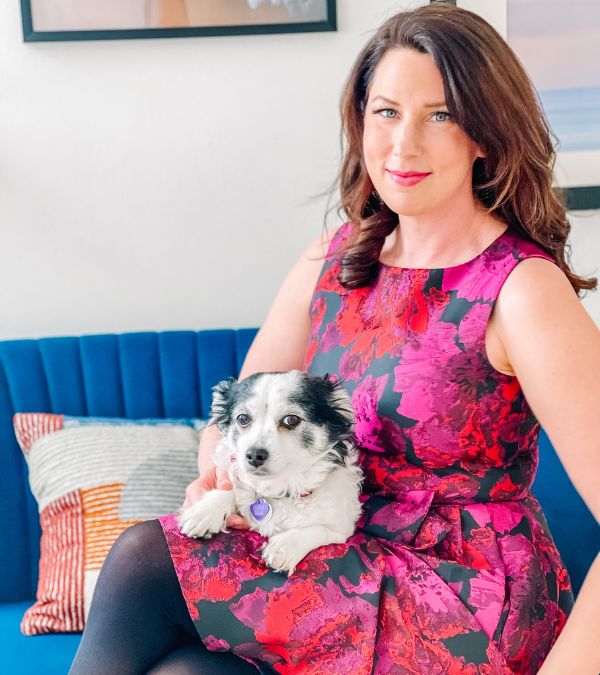

Instead of chasing sleep, relax your mind
Megan O’Neil is an LA-based actor who was first diagnosed at age 30. After chemo, radiation, and a double mastectomy, she had four and one-half years of living with no evidence of disease (NED) until a stage IV recurrence arose in 2020. Megan is now in her second clinical trial for metastatic breast cancer treatment. She uses vivid phrases like “spiral thinking” and “tornado of thoughts” to describe what can happen when her head hits the pillow.
Worrying about sleep is a lot like those children’s finger toys where the harder you pull, the more stuck your fingers get, according to Natalie Solomon, PsyD, clinical assistant professor in the Department of Psychiatry and Behavioral Sciences at the Stanford University School of Medicine. Speaking at the 13th annual “Joining Forces Against Hereditary Cancer” conference, Solomon said, “The way to actually get out of one of those things is to stop trying.” In other words, don’t chase sleepiness. Wait for it to come to you.
Megan agrees. She gained a lot of useful strategies during a class on mindfulness-based stress reduction, such as the “see-hear-feel triangle.” Silently naming all the things that you see, hear, and feel as you lie awake can shift your attention away from worries.
Or, focus on what part of you feels good right now. Megan also likes body scan exercises — sometimes called Yoga Nidra — in which you methodically scan every part of your body from head to toe, noticing sensations and sending relaxing, deep breaths into each area. There are many guided voice recordings for body scans available free online. Megan also recommends the Mindful Self-Compassion Workbook by Kristin Neff and Christopher Germer, which Dr. Strauss agrees has great content.

Your body is already in struggle mode, so be mindfully compassionate with yourself. Get curious about the sleeplessness instead of judgmental.
Use soothing distraction for anxious nights
If Megan does find herself inescapably awake in the middle of the night, she likes to leave her husband sleeping and go to another room to turn on reruns of Bob’s Burgers, a favorite animated sitcom. She knows the series so well, she can close her eyes and follow along by listening. Dr. Strauss calls this “soothing distraction.” This technique involves setting aside troubling or frightening thoughts until a more constructive time, when we can face them in the light of day.
Lots of things can provide soothing distraction, including calming audio books, music, or podcasts — even reliving cherished memories, such as a lovely vacation. Keep the lights very dim, avoid blue light (the light emitted by smartphones and other screens), and stay away from goal-oriented activities like puzzles and games with scores.
“It’s not our ‘job’ to sleep,” explains Dr. Strauss. “We can’t beat ourselves up for our own anxiety, which is natural. Let’s go very easy on ourselves and try to discover how we can get out of the way of sleep.”
When Megan’s anxiety meter is running on high, she says, “I remind myself that I am safe in the present moment, and it’s ok to fall asleep. But it’s also ok if I can’t. I’ll catch up another time. I tell myself I’m resting my body even if I’m not sleeping and find ways to distract myself.”
The right light at the right time can help you sleep
Light plays a major role in our daily internal cycles of activity and rest. Research shows that bright lights — particularly blue light (both have short light waves with high energy) — signal to the brain that it’s daytime. As a result, this tells our body to stop producing melatonin, a natural sleep-inducing hormone. That’s why some people like to take melatonin supplements around bedtime. NOTE: Always consult your physician before using any supplement. Melatonin can interact negatively with some medications, and it can be harmful for individuals with certain conditions.
You can use the power of bright-light exposure in the morning to tell your brain that a new day has started, helping to reset your inner clock. “It is very good for our sleep to get consistently timed morning light, and outdoor light is the gold standard,” explains Dr. Strauss. A short walk outside is optimal but even 15 to 30 minutes by a sunny window or in a brightly lit room looking at a screen can help your body regain its normal day/night rhythm. This may help you become sleepy at bedtime.
The opposite holds true. When you are winding down for sleep, it’s important to avoid bright lights and blue light. That means putting away phones, tablets, and TVs in favor of music, an audio book, or any calming activity you can do in very low light. Then be sure to make your bedroom as dark as possible for sleeping.
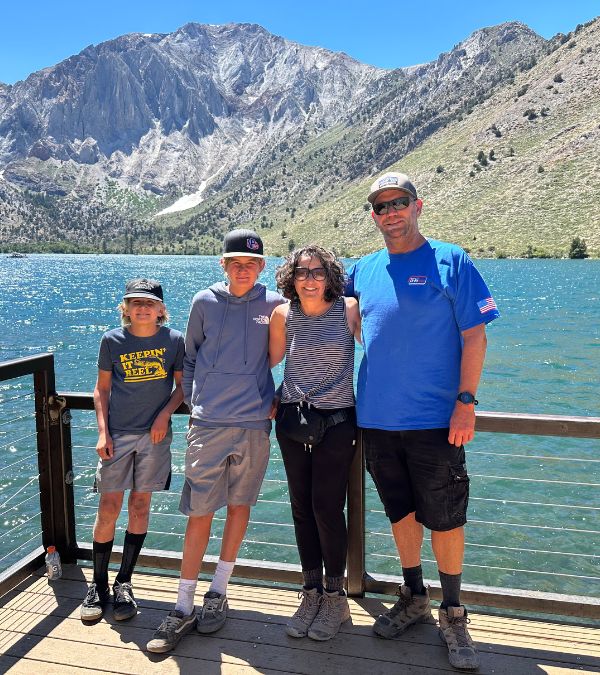
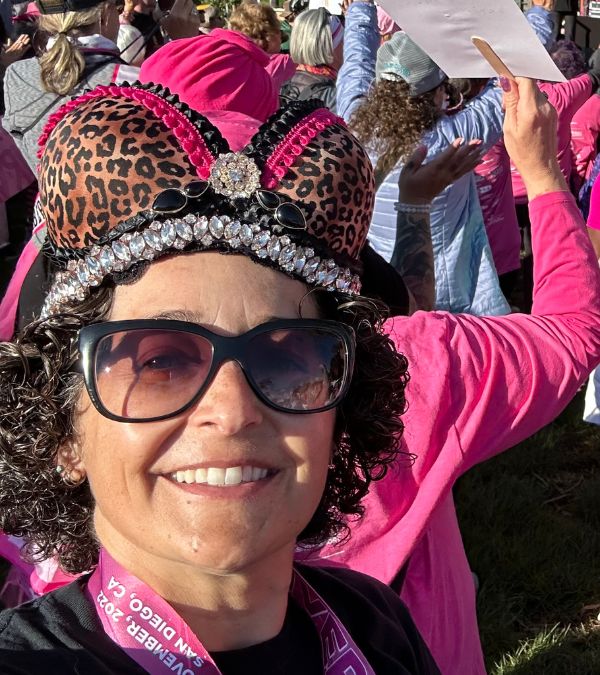
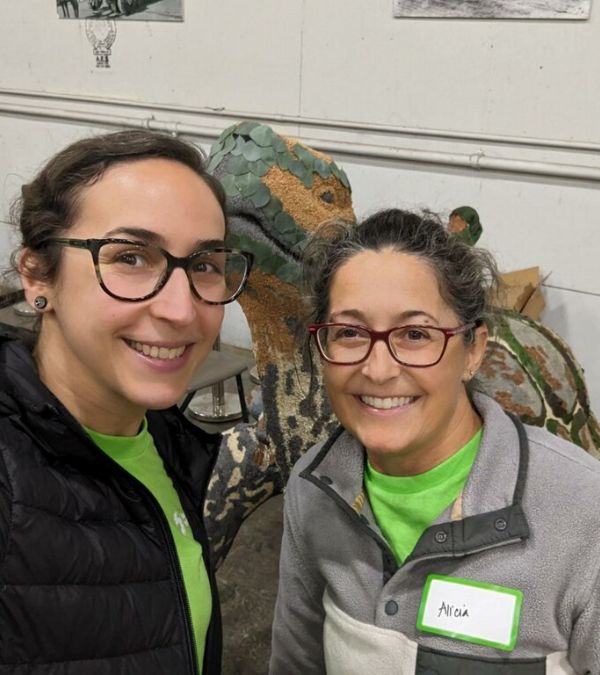
When staying asleep is the challenge
Alicia Lagendijk was a super-busy mom of 9- and 11-year-old boys, and a nurse working long night shifts, when she discovered a breast lump in March 2021. Already knowing that she had an inherited BRCA gene mutation, Alicia moved quickly. After diagnosis, she underwent chemotherapy, bilateral mastectomy with sentinel lymph node biopsy, ovarian suppression, a PARP inhibitor, radiation, oophorectomy, and DIEP flap breast reconstruction.
Alicia took a year off from work to focus on treatment. When she felt ready to return, she decided that a more routine, nine-to-five position would be better for her and her family. Now she’s a nurse case manager in a breast health clinic and in her second year of endocrine therapy. Alicia finds it easy to fall asleep, but she usually wakes up around 2 a.m. and can’t get back to rest, despite trying a wide range of things suggested in her reading or by others in the breast cancer community.
She limits her evening liquids to minimize nighttime bathroom trips. She has used commonly recommended sleep supplements such as melatonin supplements, tart cherry juice, and magnesium drinks, without success. With her husband sleeping next to her, Alicia hesitates to go to another room or to listen to an app on her phone, for fear of disturbing him. A friend recently recommended going through the alphabet mentally, and listing all the groceries she can think of that start with each letter. In a real pinch, she may take a Benadryl, but she worries about morning grogginess.
Always an active person, Alicia finds that yoga and Pilates ease the joint stiffness that would otherwise keep her awake. She also avoids caffeine and alcohol, which Dr. Strauss endorses. But so far, nothing seems to eliminate those prolonged awakenings in the early hours, which is very frustrating.
Although there are many strategies for staying asleep, they don't always work for everyone. Talk to your doctor if you're having difficulty.
A “top tip” for insomnia
For those who have frequent or prolonged awakenings, Dr. Strauss strongly recommends trying sleep compression. This is a way to help ensure that the time you do spend sleeping provides maximum rest. Normally, your nightly sleep goes through different stages with varying depths. When sleep is continually interrupted, you may not spend enough time in the most restorative stages of sleep. In this situation, Dr. Strauss calls sleep compression her “top tip for sleep.”
First, establish comfortable guardrails around your sleep that work for you. Pick an interval that’s 7 to 7-½ hours long. For example, an early riser might choose 10 p.m. to 5:30 a.m. as their guardrails; a night owl might choose 12:30 p.m. to 8 a.m. Then, she explains, “go to sleep when you feel ready and wake up when you like, as long as no sleep occurs outside of the guardrails. Even if you have a bad night, stay within your guardrails.” Compression should deepen your sleep, while limiting your number of awakenings and your duration of wakefulness. It should not leave you feeling sleep deprived.
You may want help from a professional to fine-tune this strategy. You can ask your doctor to recommend a certified sleep specialist near you. Try it for several nights in a row, up to two weeks.
What about CBD and other sleeping medications?
Despite reaching for an occasional Benadryl or Tylenol P.M., many people living with breast cancer prefer not to take medication on top of their cancer-specific treatments. Now that CBD products are widely available and 38 states have legalized medical marijuana, these have become additional prescription or non-prescription options. If you want to try medical marijuana, talk with your doctor to make sure it’s right for you and be sure you obtain the right type of product. Learn more here.
According to Dr. Strauss, “There’s a dose dependence with CBD – too little can have the opposite effect. Habitual marijuana use can also cause a rebound effect, leading to insomnia.” Marijuana can also suppress R.E.M. sleep, which is critical to feeling rested and refreshed. Some people worry about the purity and dose-accuracy of products purchased outside of a dispensary. It’s also important to know that there are different strains of medical marijuana, such as indica strains (calming) and sativa strains (stimulating).
Another consideration for anyone who likes to travel: There are many places you cannot bring CBD products or marijuana. Visit the medical marijuana page for information about marijuana laws in different states.
More conventional prescription sleep medications “shouldn't be thought of as evil,” says Dr. Strauss, “but they have their own complications such as morning grogginess or dependency problems.” These medicines might be helpful as a short-term approach, with guidance from a physician who knows your health history and monitors your treatment.

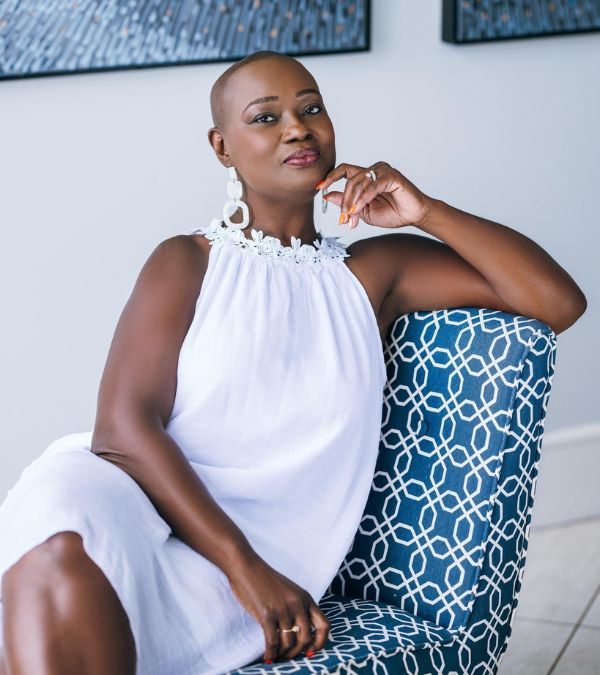

Build your sleep toolkit
Terlisa Sheppard was originally diagnosed with Stage III breast cancer at age 31 in 1998, while she was 8-½ months pregnant and the mother of a two-year-old. Now she has been living with metastatic breast cancer for almost 20 years and her two “babies” are vibrant young women.
Early on, Terlisa faced relentless exhaustion from aggressive treatments while caring for the needs of her newborn and toddler. She remembers waking up in the middle of the night needing to change her bedclothes and pillowcase from the severity of her treatment-induced hot flashes. This isn’t surprising — it’s a common experience. Somehow, she pushed through. At the time, she didn’t have specific strategies, just sheer will.
Today, as a dynamic thriver and breast cancer advocate living in Orlando, Florida, Terlisa has a full sleep toolkit. Yoga helps her joint pain, while mindfulness meditation, sound baths (a gentle wash of soothing, sounds with instruments such as gongs, singing bowls, and chimes), painting, and scrapbooking give her positive things to focus on. However, her favorite strategy for stress and the steroid-related stimulation she experiences on infusion days is to head straight to Disney World or Sea World. Both are located a short drive from her cancer center. “I love it there and when I go, I don’t even think about the aches and pains,” she explains. “I know I’ll have a better night’s sleep because I’m tired from walking around the park — and I get my steps in!”
Listen to your body when managing sleep
“Sometimes no matter what we do — even if we’re doing everything really well — it isn't going to be adequate,” cautions Dr. Strauss. That’s why it’s important to learn about and try a range of approaches. Build your own sleep toolkit from the methods that feel right for you. It pays to have different strategies for different situations, from the night before a scan to the day after an infusion.
Always check with your physician about every medication and supplement you take, including those for breast cancer, other conditions, and general health. Many substances can affect sleepiness or wakefulness. If you have trouble sleeping, talk with your healthcare team and tell them about all the medications and supplements you're using. They may recommend adjustments to your dosing or timing to help you sleep better.
It is also critical to finding a balance between following routines and remaining flexible, while always being kind to yourself. Whatever tools you choose, Dr. Strauss advises, “You know your body better than anyone … Don't be rigid about any set of recommendations. Listen to your body.”
Related news
- Control what you can control: What research tells us can reduce your risk of breast cancer, recurrence, and support better quality of life | SABCS 2025
- FDA approves new drug for relief from hot flashes
- Sex drive gone in a flash?
- How to manage sleep difficulties related to breast cancer
Related downloads
View allStay connected
Sign up to receive emotional support, medical insight, personal stories, and more, delivered to your inbox weekly.

